
ECapoe has an hydraulic transmission steering and from the origin a Necco autopilot.
A chain transmit the rotation to the axis of an hydraulic pump via a sprocket. From the pump, two hoses go from the engine room to the piston at the back of the boat.
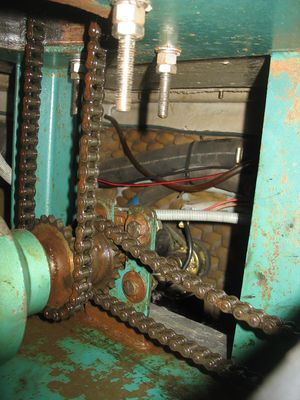
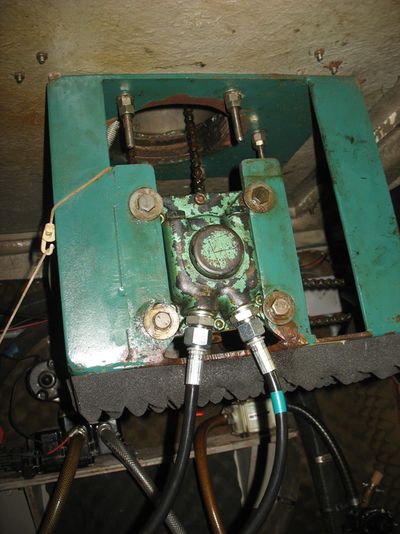
A bye-pass allows to disconnect the hydraulic transmission and to steer directly the rudder. It works fine, though a little tiring because you have to sit somehow next to the mizzen, exposed to wind and no really comfortable. On the same axis of the hydraulic pump, a second sprocket and chain transmits the movement from the autopilot motor. As a result, the wheel turns when the autopilot is on. Chains are ½ inch. The Necco pilot included the command boxe located next to the engine board on the port side of the cockpit, the motor and boxe of relays located in a steel structure bolted to the bottom of the cockpit in the engine room, a compass hidden under the bed in the back cabin, and a rudder position indicator.
Due to its age, little electric trouble, and our project, we decided to change the pilot.
The most simple was to replace by the same system, but modern. We chose the inboard pilot with rotary drive type 2 and SPX30 by Raymarine. The command board ST 6002 as the simplest chose because we have no other device to connect to the pilot. The equipment is well described on Raymarine web site http://www.raymarine.fr/products/autopilots/smartpilots-inboard-autopilots/
The rotary drive was locate dat the same place as the old one, I just needed to drill extra holes in the steel board. The axis of the new rotary drive in a few 100th smaller and I had to adjust but I could keep the same sprocket and chains. I guess I’ll need to get a new sprocket at some point.
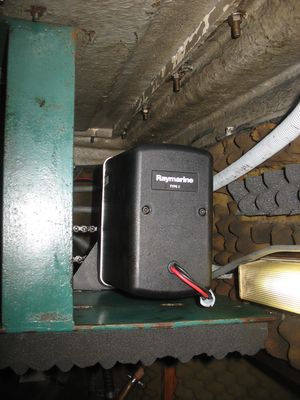
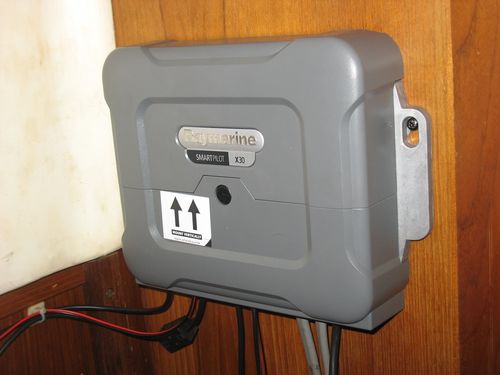
The SPX 30 was placed in the central cupboard of the back cabin. The compass was screwed in a position as central as possible just behind the main table. I tried to install all that to decrease cable lengths and in teractions with the current electric installation. The calibration you need to do after installation was easily done, the manuals provided by Raymarine are precise and well done.
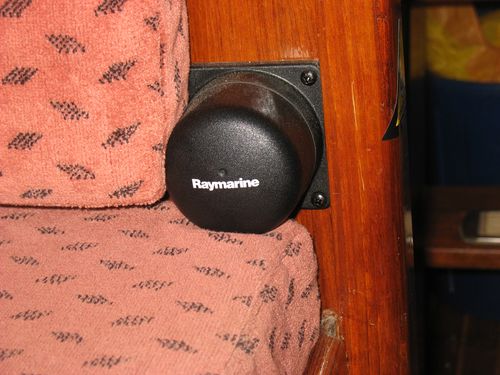
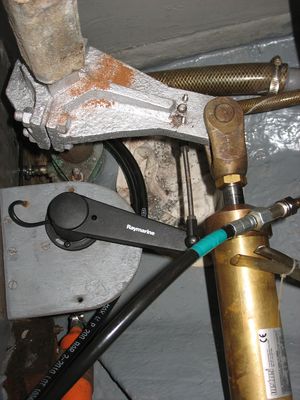
It works ! I find that the pilot works a lot. And I leave it at the minimum precision 1 out of 9, working on the sails to balance the boat. I increase to 3-4 only against the wind or on the contrary back wind when it is important not to go beyond the wind direction. I’ll add some more information during navigation.
André
08/02/2011, after crossing the Atlantic, Sainte Anne, Martinique
The new autopilot steered almost 24h/24 since we left Port St Louis last August. The result is quite OK. The calibaration done following precisely the RayMarine manual has worked fine. I used only the first basic tuning level RayMarine offers, from 1 to 9, by default 5. I mostly used 1, 2 or 3, and it was enough. Otherwise, the pilot works really a lot. 3 was only when it is absolutely necessary not to loose course, when ECapoe sails just at the edge, and when loosing course causes unwanted tack. Also when waves are stronger. During the crossing, backwind with bigs seas, the pilot did an excellent job.
We occasionaly steered to save battery power. Besides being very tiring because of necessary concentration, the pilot did a much better work!
Only negative point, the power it uses. 6 t 7 amps all day is a lot. We had to turn off all consumers at the end and got to the limits of our energy balance. But by the end of such a crossing, there is not much fresh food left and it was not such a pain not to use the fridge.
Document generated in 0.03 second